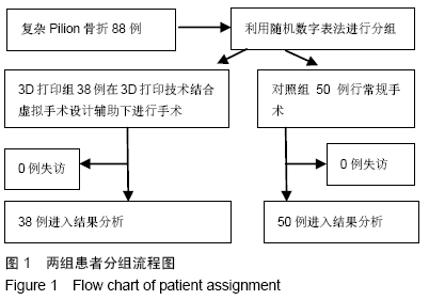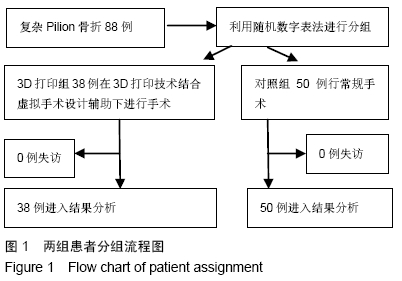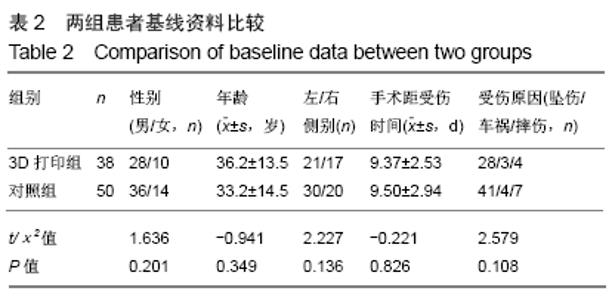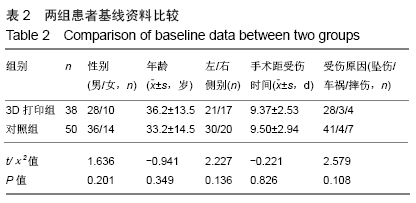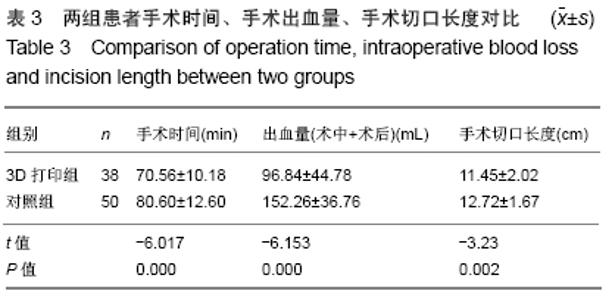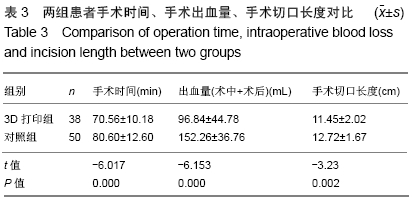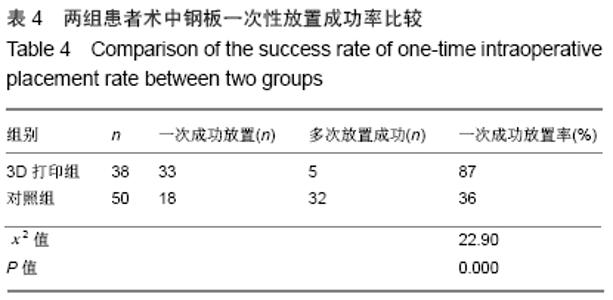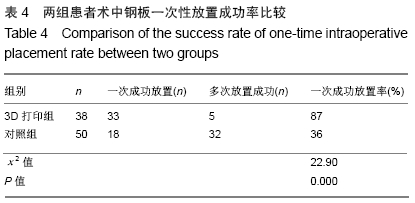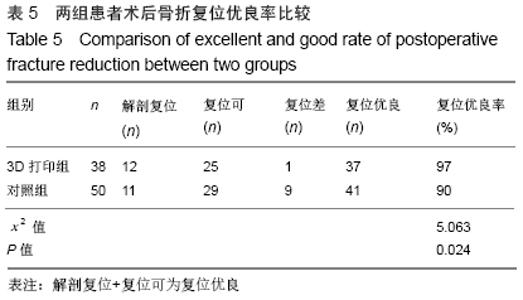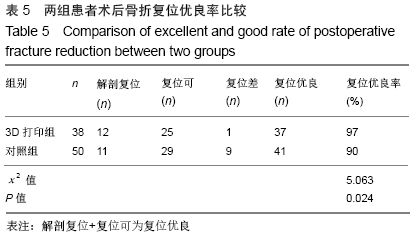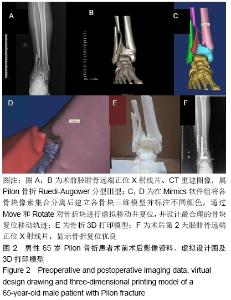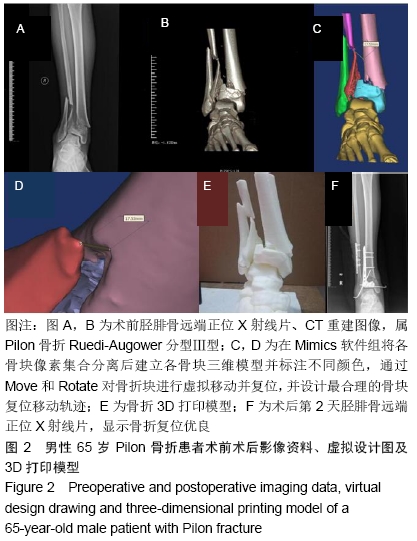[1] ZHANG CC. Diagnosis and therapy of tibial plateau fractures and pilon fractures. Zhongguo Gu Shang. 2010;23(2):81-83.
[2] LIU J, SMITH CD, WHITE E, et al. A systematic review of the role of surgical approaches on the outcomes of the tibia pilon fracture. Foot Ankle Spec. 2016;9(2):163-168.
[3] 戴冲华,孙骏,陈坤全,等.漂浮体位下Rüedi-Allg wer Ⅲ型Pilon骨折的治疗[J].创伤外科杂志,2018,20(1):56-58.
[4] 余光书,许长鹏,林焱斌,等.基于3D打印的虚拟手术设计在复杂胫骨平台骨折内固定中的临床效果观察[J].中国医药科学,2017,7(21): 181-183.
[5] 王亦璁,姜保国. 骨与关节损伤[M].5版.北京:人民卫生出版社,2014: 1389-1395.
[6] RUEDI TP, ALLGOWER M. The operative treatment of intra-articular fractrues of the lower end of the tibia. Clin Orthop Relat Res. 1999;138:105-110.
[7] 黄俭,王小平,邓志成,等.Mimics软件三维重建在Pilon骨折修复中的应用[J].中国组织工程研究,2015,19(44):7167-7171.
[8] 韩曼曼,崔权维,乌日开西·艾依提,等. 虚拟现实技术在足部骨折辅助手术中的应用[J].中国组织工程研究,2017,21(3):378-382.
[9] BUEWELL HN, CHARNLEY AD. The treatment of displaced fractures of the ank-le by rigid internal fixation and early joint movement. J Bone Joint Surg (Br). 1965;47:634-660.
[10] MAZUR JM, SCHWARTZ E, SIMON SR. Ankle arthrodesis: long-term fellow up with gait analysis. J Bone Joint Surg(Am). 1979;61(7):964-975.
[11] RÜEDI TP, ALLGWER M. The operative treatment of intra-articular fractures of the lower end of the tibia. Clin Orthop Relat Res. 1979;(138):105-10.
[12] 王云龙.分步延期手术治疗高能量Pilon骨折的临床研究[D].济南:山东中医药大学,2012.
[13] 王亦璁,姜保国. 实用骨科学[D].5版.北京:人民卫生出版社,2014: 1046-1057.
[14] 李建鹏,高翔,陈玉宏,等.前外侧联合内侧微创入路治疗AO-C型Pilon骨折[J].中国矫形外科杂志,2019,27(6):486-490.
[15] 祁雷,吴晗,李军,詹俊锋,等. Pilon骨折的诊断与治疗进展[J].局解手术学杂志,2018,27(1):73-77.
[16] LIU J, SMITH CD, WHITE E, et al. A systematic review of the role of surgical approaches on the outcomes of the tibia pilon fracture. Foot Ankle Spec.2016;9(2):163-168.
[17] 章莹,李宝丰,王新宇,等.术前3D打印技术模拟复杂骨盆骨折手术提高疗效的可行性研究[J].中华创伤骨科杂志,2015,17(1):29-33.
[18] URRUELA AM, DAVIDOVITCH R, KARIA R, et al. Results following operative treatment of tibial plateau fractures. J Knee Surg.2013;26(3):161-165.
[19] VASANAD GH, ANTIN SM, AKKIMARADI RC, et al. Surgical management of tibial plateau fractures a clinical study. J Clin Diagn Res. 2013;7(12):3128-3130.
[20] DEMARTINI TL, BECK AF, KLEIN MD, et al. Access to digital technology among families coming to urban pediatric primary care clinics. Pediatrics. 2013;132(1):142-148.
[21] 左睿,孙永建,吴毅,等.3D打印与虚拟手术设计在复杂胫骨平台骨折手术治疗中的应用[J].中国骨与关节损伤杂志,2016,31(4):369-372.
[22] 王博亮,蔡明,郭晓曦,等.数字医学在精准骨科手术中的应用[J].厦门大学学报(自然版),2013,52(2):202-205.
[23] 陈志平,左朝江,邵庆中,等.Mimics软件三维建模确定椎弓根钉最佳置入点的临床应用[J].中国骨与关节损伤杂志,2017,32(3):279-280.
[24] 覃重航,王文权,许永秋,等.Mimics软件在Ⅲ型Pilon骨折治疗中的临床应用[J].中华临床医师杂志(电子版),2017,11(2):340-342.
[25] 樊文勃,赵凯,崔斌,等.逆向工程软件Mimics在复杂性Cotton骨折手术治疗中的应用研究[J].中国数字医学,2017,12(6):73-75.
[26] 柳鑫,曾参军,卢键森,等.3D打印计算机虚拟辅助技术在髋臼骨折术前规划中的应用[J].南方医科大学学报,2017,37(3):378-382.
[27] 崔庆赢,陈思宇,聂焱,等.Mimics软件在牙槽突裂骨移植术前骨缺损量评估中的应用[J].昆明医科大学学报,2019,40(10):27-31.
[28] 杨龙,王建吉,孙琦,等.胫骨平台骨折植入物内固定修复中3D打印技术的辅助应用[J].中国组织工程研究,2016,20(13):1904-1910.
[29] WANG X, ZHANG K, ZHU Y. Clinical application of 3d printing technology in the treatment of complex tibial plateau fracture. J Pract Orthop. 2015;21(10):887-890.
[30] 王小平,韦展图,黄俭,等.虚拟三维重建术前规划技术在Pilon骨折的应用研究[J].中国修复重建外科杂志,2016,30(1):44-49.
[31] WEISS H, TOURNAVITIS N, NAN X, et al. Workflow of CAD/CAM scoliosis brace adjustment in preparation using 3D printing. Open Med Inform J. 2017;11(1):44-51.
|
